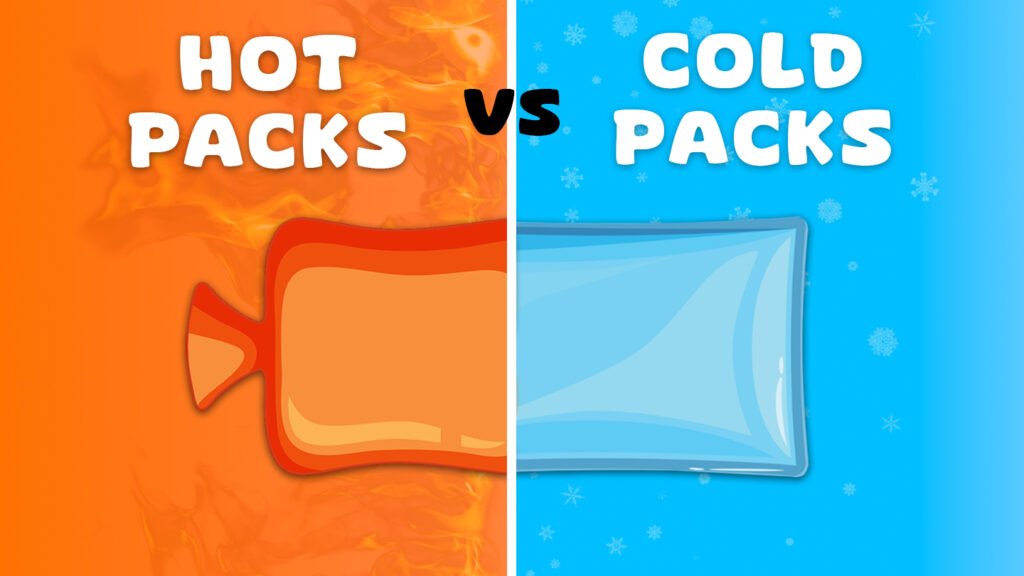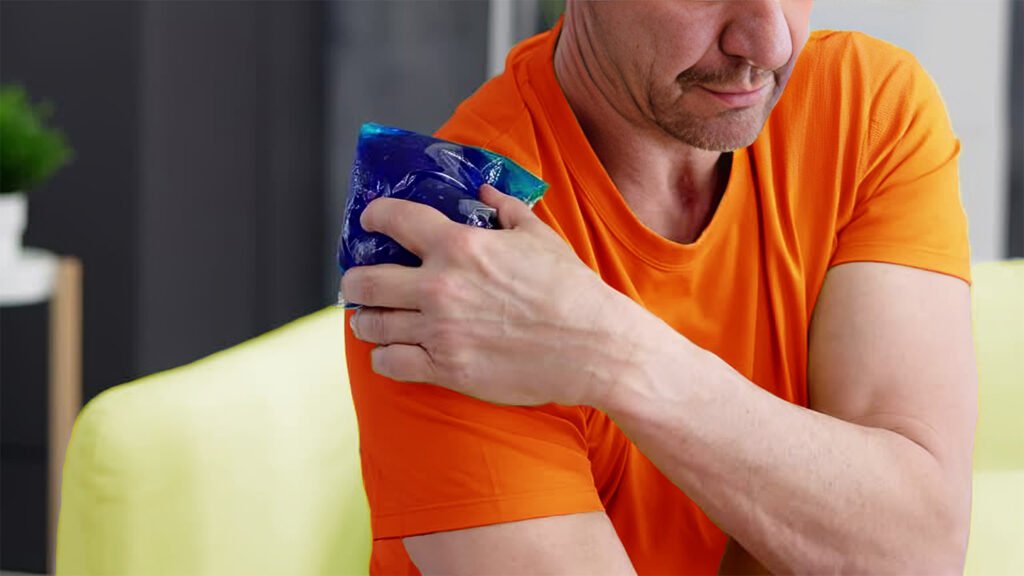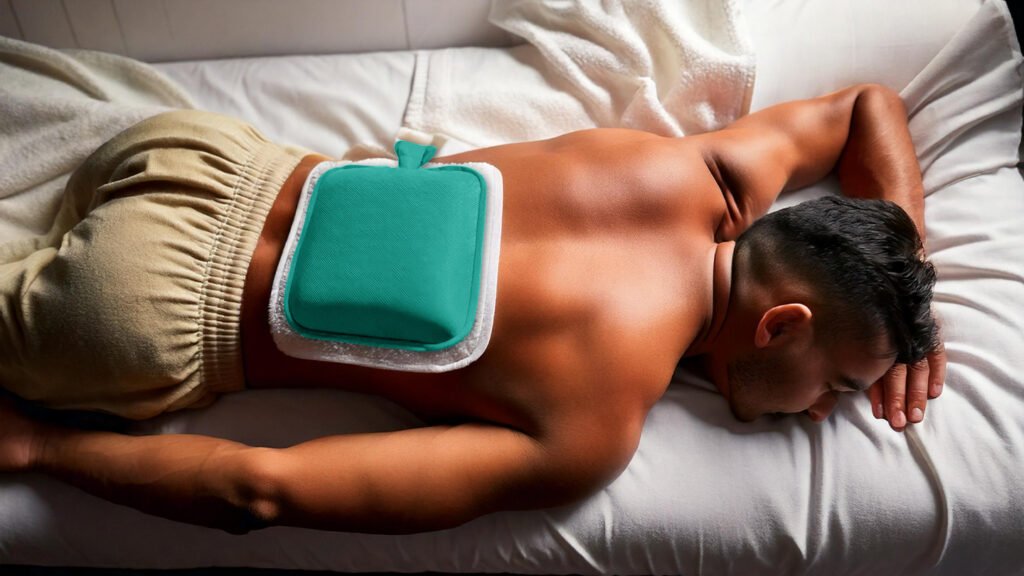Are you struggling with pain that seems to affect everyone at some point? Don’t worry! You’re not alone in this. Pain is a subjective experience we’ve all felt, whether it’s the sharp sensation from an injury or the dull discomfort caused by chronic illness.
Among the various techniques for pain management, one of the simplest yet most effective methods is temperature therapy—using cold or heat. Ice packs vs hot packs ,each provide unique benefits that help alleviate pain in different ways.
Learning how to use these therapies can significantly change how we approach pain relief. In this blog post, we will discuss the fundamental concepts of ice packs vs hot packs, their practical applications, and their benefits for tackling specific types of pain. By harnessing the power of temperature therapy, you can take an active role in your journey to pain relief and enhance your overall well-being.

Ice Packs vs Hot Packs Therapy
What are ice packs?
●An ice pack is a readily available tool in cold therapy, it is one of the old remedies that deals with injuries and relieves pain. When such packs are used on any part of the body, they usually reduce the temperature of the local region which assists in the healing process.
● In most cases, ice packs are made from materials good to retain cold, such as gel or other insulated substances. The part where the ice pack is placed diminishes in both swelling and pain because blood vessels in that layer constrict, numbs the area and constricts the blood flow in that area. This is helpful after injuries because it promotes healing and decreases swelling or collection of fluid.
●The cooling effect of these ice pack reduces the temperature of the skin by 10 degrees. The sensation is rather pleasant and most of the time works immediately. They are useful, especially for injuries such as sprains, strains, recovery after a surgery.
How Cold Therapy Works -
Treatment of injuries is possible with the help of cold therapy as well as relieving discomfort in a large part due to effects on blood flow and neural response.
• Circulatory response

When cold is applied to the skin, the body’s primary reaction is to conserve heat. This process involves vasoconstriction or narrowing of the blood vessels thus reducing blood supply to the region. While this can lead to a significant drop in temperature.
At the beginning of the body cooling after vasoconstriction, vasodilation occurs that means blood vessels expands. This effect may be repeated, even after the direct cooling effect has subsided, allowing better blood circulation. Using cold therapy in combination with compression bandages is a popular method to speed up recovery.
•Neural response
Cold therapy also has effects on the neural system apart from the circulatory effects. The skin contains more cold receptors than warm ones. When cold is detected, these receptors are activated and send signals to the brain. This activates sustained nerve impulses. Further cooling generates higher signals, which eventually cause numbing the area for pain relief.
Along with the circulatory and neural response, the primary advantage of cold therapy is that it controls outside swelling and inflammation, as well as brings direct relief, which is very important in injuries rehabilitation and pain management.
Benefits of Ice Packs -
■Reduces
swelling – Ice packs are very helpful in reducing swelling and
bruising after an injury. The capillary blood flow is influenced by
vasoconstriction and vasodilation, which are alternating processes. This
happens at the level of the capillaries and within capillary beds where
the tissue fluid metabolism and exchanges take place. Ice helps in controlling
swelling by reducing extra tissue fluid and it leads to reduction in
inflammation of that area. Better circulation also facilitates the influx of
healing and nourishment hence supporting the healing process.
■Pain
reduction – Pain relief is one of the most known benefits of ice
therapy and cold packs is its ability to relieve pain. By numbing the
area, cold therapy helps in reducing discomfort and can make a significant
difference in recovery. The cooling effect provides immediate relief
for acute pain, making cold therapy a quick solution for many injuries.
■Reduces
muscle spasms – Injuries often trigger muscle spasms, a natural
response to pain that increases muscle tension in specific areas. This
protective mechanism helps shield the injured site from further damage.
However, prolonged spasms can lead to increased pain and discomfort. Cold
therapy is an effective treatment for muscle spasticity and spasms.
■Cold
inhibits the speed to which nerves can conduct impulses or it can make
particular receptors (for instance muscle spindles) less sensitive. These
physiological conditions can help to ease the spasm of the muscles and the pain
which assists in recovery by making the process less straining.
■Ice packs
are effective in promoting the healing process by combating swelling,
alleviating pains, and even muscle spasms hence they are very helpful in
recovering from an injury.
Hot packs or heat therapy
➤A hot pack is a thermal device classified as a moderate heating tool, commonly used in thermotherapy, which involves treating discomfort through the application of heat. These packs help to ease muscle spasms, improve range of motion and ease the pain. They achieve through applying heat to the surface of the skin and the tissues beneath, helping to loosen the muscles and increase blood flow.
➤ Hot packs can be made of gel, rice, or any other heat retaining material. There are various types providing different methods of application from applying directly to the skin to covered in a piece of cloth for protection before applying.
➤As much as hot packs provide great advantages, theirs should be cautious usage. They should not be used on skin with impaired sensation, open wounds, bleeding, and areas of known vascular impairment in order to avoid injuries or complications.

How heat therapy works -
•Local temperature
Applying hot packs raises the local body temperature due to heat transfer from the pack to the skin and underlying tissue layers. The temperature increase should not exceed 45°C to avoid tissue burns. This temperature rise is directly proportional to the exposed tissue area and the temperature of the hot pack.
• Blood circulation
Increase in tissue temperature is associated with vasodilation. This widening allows more blood to flow to the warmed area, which is particularly noticeable in the superficial tissues. Vasodilation starts by the increased temperature. When tissues heat up, certain chemicals are released that signal the blood vessels to expand. This increase in blood flow helps deliver more oxygen and nutrients to the area, promoting healing and reducing pain.
Benefits of hot packs -
•Pain relief
The application of heat to any given part tends to relieve the pressure in a number of ways. First, heat tends to decrease the speed at which the nerves transmit pain impulses to the brain. As such the amount of pain that is experienced is lower. Additionally, heat can elevate your pain threshold. Also, warmth generally has a calming effect. Also, when the pain is associated with cramps, heating is effective in relieving the spasms.
•Muscles relaxing
Muscle spasms are very painful, and using hot packs can help in controlling this condition. Heat causes inhibition of certain nerves. This inhibition of nerves may be beneficial in stopping the contraction of muscles. In most cases, using a hot pack on the region will enable one to feel better regarding the muscle’s tightness.
•Increased flexibility
Hot packs can make tissues more flexible and increase the extensibility of the connective tissues. Heat helps soft tissues stretch better, especially when combined with stretching exercises.
Key differences between Ice Packs vs Hot Packs
Temperature effects on the body
☑ Cold therapy: Reduces blood flow, numbs pain, and minimizes swelling.
☑ Heat therapy: Enhances blood circulation, relaxes muscles, and reduces stiffness.

Best uses for ice packs:
•Acute injuries: sprains and strains
In acute injuries like sprain or strain applying an ice pack immediately can help reduce swelling and numb the pain. One should apply cold pack for 15-20 minutes with appropriate laying to avoid frostbite in every 1-2 hours for few days after the injury.
• Post-surgery recovery
After surgery, using ice packs is an effective way to minimize pain and swelling in the affected area. Be sure to follow your doctor’s or surgeon’s recommendations for proper cold pack application and duration.
•Inflammation and swelling
Different types of inflammatory conditions like tendinitis or bursitis can benefit from cold therapy to reduce inflammation. Consistent use of ice packs can efficiently help control symptoms.
Best uses for hot packs:
• Chronic pain management
Hot packs are very effective in chronic conditions like arthritis, applying heat can relieve stiffness, improve mobility and relieve pain. Applying hot packs for 10-15 minutes helps reduce discomfort.
• Muscle tension and stiffness
If there is tightness in some muscle, hot pack or heat therapy can relax the muscle and relieve the symptoms. It works better if done before stretching and other exercises.
•Menstrual cramps
Heat therapy can relieve menstrual cramps by relaxing the uterine and abdominal muscles. Applying a hot pack on the abdomen for 15-20 minutes can provide significant relief. Always consult doctor if feel sever pain, any associated symptoms or there is no relieve after application of hot pack.
How to properly use ice and hot packs
Application of ice packs
➦ Cover the ice pack in a cloth to protect your skin.
➦ Position it over the affected area for 15 to 20 minutes.
➦ Apply at least 2-3 times a day.

Application of hot packs
➦Make sure the hot pack is warm, not excessively hot, to avoid discomfort. Shield it with a towel to prevent burns.
➦ Position it over the affected area for 15 to 20 minutes.
➦Use at least twice a day for relief. Also, before stretching or exercises.
Precautions for hot and cold packs
1. Do not apply ice or cold pack directly to the skin. Always use a cloth or barrier to prevent frostbite.
2. To prevent burns or frostbite, always verify the temperature of heat or cold packs before applying.
3. Cold pack should not be used on stiff muscles or chronic pain conditions, use hot pack instead for chronic conditions and stiff muscles.
4. Do not apply heat to new or acute injuries and swollen areas, as this can worsen the condition.
5. Cold therapy is not suitable for those with poor blood circulation, while heat therapy should be avoided for individuals with vascular diseases, deep vein thrombosis, diabetes, or skin disease like dermatitis.
6. Individuals with sensory disorders or impaired sensation should avoid using hot or cold packs without professional supervision to prevent burns or injuries.
7. Pregnant women with high blood pressure should consult a healthcare provider before using heat therapy.
8. Neither hot nor cold therapy should be applied to open wounds.
In deciding whether to use ice packs or hot packs, the nature of the ongoing pain or injury is taken into consideration. Cold therapy is ideal for providing relief from injuries that are acute and for dealing with any form of swelling. On the other hand, heat treatment is effective in instances where there is chronic pain that has persisted for quite a lengthy period and in ensuring there is relief of muscle tension. Knowing the usage of these therapies at what time can go a long way in improving the management of pain.

- Hot or Cold: Which therapy works best?
- The physiologic basis and clinical applications of cryotherapy and thermotherapy for the pain practitioner , pain physician. 2004;7:395-399, issn 1533-3159
- Nadler, s. F., weingand, k., & kruse, r. J. (2004). The physiologic basis and clinical applications of cryotherapy and thermotherapy for the pain practitioner. Pain physician, 7, 395-399. Issn 1533-3159.
- Hot and Cold Therapy
- Clayton, h., forster, a., & polastanga, p. (2006). Clayton's electrotherapy (9th ed.). Aitbs publisher.
- Singh, j. (2017). Textbook of electrotherapy. Jaypee brothers medical publishers pvt. Limited.

